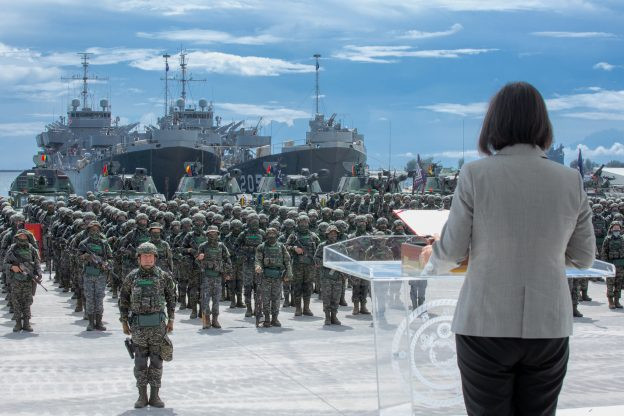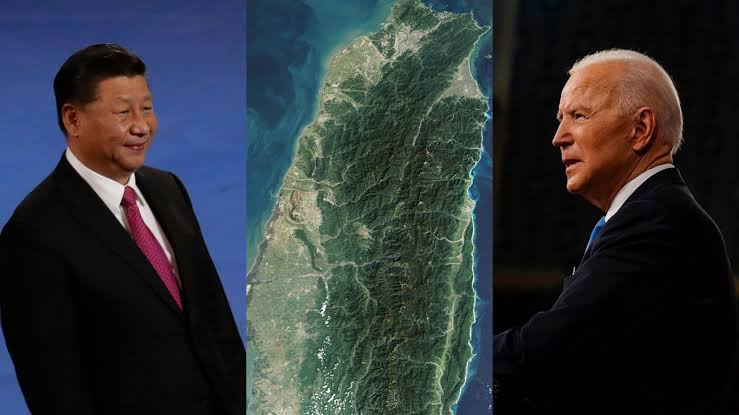
Taiwan must be protected ‘as a democratic country’ – Japan vows as it reminds US, NATO allies of China/Russia threat
Published on June 29, 2021 at 11:57 AM by Face of Malawi
Japan has vowed to work with the US in protecting the Island of Taiwan as China continues to make threats against the self governed island of more than 20million people.

Japan warned of the growing threat posed by Chinese and Russian collaboration and said it was necessary to “wake up” to Beijing’s pressure on Taiwan and protect the island “as a democratic country.”

State Minister of Defense Yasuhide Nakayama said the fate of Taiwan and Okinawa are key to stemming the military influence of China and Russia in the Western Pacific.
“We are family with Taiwan,” said Yasuhide Nakayama, Japan’s state minister of defense to the Hudson Institute online forum.
Its security “is clearly related to Okinawa’s protection,” part of Japan.
Okinawa is home to concentrations of Japan Air and Maritime Self-Defense Forces and American Air Force, Marine Corps and naval support facilities, as well as service members’ families.

Okinawa and Taiwan are “kind of like nose and eyes, really close,” he said.
Nakayama (pictured below) revealed that China recently sent 28 fighters across the Taiwanese straits, with some flying into Taiwanese air space to intimidate Taipei.

He added Chinese president Xi Jinping is also trying to leave the Taiwanese with an impression that they are surrounded, by sending ships, including an aircraft carrier, fighter aircraft and bombers on patrols and exercises east of Taiwan.
Some of these exercises are conducted with the Russians, “giving lots of threats to Taiwan.”
“We have to show deterrence to China and Russia,” not just defense, as they act more aggressively in the Indo-Pacific, he said. They have ramped up joint military exercises in the region to make their forces more interoperable.
As steps to improve deterrence, Nakayama said Tokyo “is thinking about stand-off capabilities” for the future and launching new satellite constellations to detect hypersonic cruise missiles that Beijing and Moscow have newly developed.
He also revealed that Tokyo is continuing to buy aircraft like the F-35 Lightning II Joint Strike Fighters and other technologies from Washington, D.C and says both countries should have continual exercises so individual service members have a better understanding of how their allies think and operate.
He then called on the United States to look at Japan’s technical capabilities for security, like “space debris clean-up” to protect satellite constellations.
Nakayama said future generations in Japan and the United States may question their nations’ decision to accept a “One China” policy in the early 1970s that linked mainland China and Taiwan together as one country.
“Democratic countries have to protect democratic countries and allies” against “the autocrats,” China and Russia, he said.
Nakayama said the security domains ranged from air, sea, land, cyber and space to include electronic warfare.
Several times during the discussion Nakayama mentioned how close the United States and Japan have become since the attack on Pearl Harbor and the ending of World War II in the Pacific, with the dropping of atomic bombs on Hiroshima and Nagasaki.
“Now it’s the most strong alliance; any other cannot compare,” he said.
But what is “happening around Japan” should “be a very big matter for the U.S., Europe and allies. Looking at China alone, Nakayama noted its increased investments in ballistic missile submarines and the concurrent development of the JL-3 sea-launched ballistic missile that is capable of striking the continental United States.
“This is a big, big threat not just for us,” but the United States and Europe, he said referring both to the longer-range sub-launched missiles and China’s building of artificial islands.
As this is occurring, “the Russian are exercising [naval forces] right off [the] western front of Honolulu” and exercising with China in land and air maneuver near their shared borders, Nakayama added.


